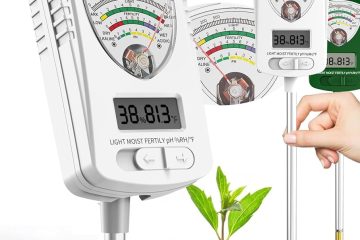In recent years, the concept of eco-friendly living has gained significant traction, and individuals are increasingly seeking sustainable alternatives in various aspects of their lives. One area where this shift is particularly noticeable is in home decor. As environmental consciousness grows, people are exploring ways to make their living spaces not only aesthetically pleasing but also environmentally responsible. This article will delve into the world of eco-friendly home decor, providing you with a comprehensive guide to making sustainable choices that align with your values.
Table of Contents
ToggleThe Rise of Eco-Friendly Home Decor
The global concern for environmental issues has fueled the rise of eco-friendly home decor. With a growing awareness of climate change and the impact of consumerism, homeowners are looking for ways to reduce their ecological footprint. This section will explore the reasons behind the surge in eco-conscious decor choices, touching upon the desire for a healthier planet and a more sustainable lifestyle.
The Essence of Eco-Friendly Living
What does it truly mean to live in an eco-friendly home? Beyond the buzzwords and the green jargon, it’s a commitment to living harmoniously with our environment. This means choosing sustainable materials, reducing waste, conserving energy, and fostering a connection with the natural world. It’s not just about the materials we use, but how we use them, creating spaces that are not only efficient but nurturing.
Sustainable Materials in Home Decor
One key aspect of eco-friendly home decor is the choice of materials. This section will highlight various sustainable materials that can be incorporated into your home, such as reclaimed wood, bamboo, cork, and recycled metal. Each material will be discussed in detail, emphasizing its environmental benefits and unique aesthetic qualities.
Designing with Nature in Mind
The blueprint of an eco-friendly home begins with thoughtful design. Such homes blend seamlessly with their surroundings, utilizing natural light, optimizing air flow, and embracing the local climate and landscape. Key to this approach is the use of sustainable materials — bamboo flooring, recycled metal roofs, and walls that breathe. These homes are not just structures, but ecosystems in themselves.
Indoor Plants for Cleaner Air
Bringing the outdoors inside is a timeless home decor trend, and it aligns perfectly with eco-friendly principles. Indoor plants not only add a touch of nature to your living space but also contribute to cleaner air by absorbing pollutants. Learn about the best air-purifying plants and how to care for them, creating a healthier and more vibrant home environment.

Low-VOC and Non-Toxic Paints
Traditional paints can release harmful volatile organic compounds (VOCs) into the air, contributing to indoor air pollution. In this section, we will discuss the importance of choosing low-VOC and non-toxic paints for your walls and furniture. You’ll learn about eco-friendly paint options that not only promote a healthier indoor environment but also add a splash of vibrant color to your home.
Water Wisdom: Conservation and Reuse
Water, the essence of life, demands respect and conservation in eco-friendly homes. Techniques like rainwater harvesting and greywater recycling turn every drop into a cycle of use and reuse. The implementation of low-flow fixtures and water-smart landscaping further reduces the water footprint, ensuring that every faucet, every garden hose, becomes a tool for sustainability.
Green Inside: Eco-Friendly Furnishings and Appliances
The interior of an eco-friendly home is a testament to sustainable living. Furnishings made from recycled or responsibly sourced materials not only minimize environmental impact but also add unique character. Energy-efficient appliances, LED lighting, and smart thermostats reduce power consumption, seamlessly combining functionality with ecological responsibility.
Embracing the 3 Rs: Reduce, Reuse, Recycle
The principles of reduce, reuse, and recycle are more than guidelines; they are the pillars of eco-friendly living. Minimizing waste, whether through mindful purchasing or repurposing items, transforms the home into a haven of resourcefulness. Recycling and composting become second nature, closing the loop of consumption and waste.
Community and Connectivity
Eco-friendly homes are not islands but integral parts of sustainable communities. They foster a sense of connectivity — be it through community gardens, shared green spaces, or local sustainability initiatives. These homes remind us that our environmental responsibility extends beyond our front doors, into the very fabric of our communities.
Energy-Efficient Lighting and Appliances
Another crucial element of eco-friendly home decor is energy efficiency. Transitioning to energy-efficient lighting and appliances not only reduces your carbon footprint but also saves you money in the long run. This section will explore the latest advancements in energy-efficient technology, providing practical tips on how to integrate these solutions seamlessly into your home.
Low-VOC and Non-Toxic Paints
Traditional paints can release harmful volatile organic compounds (VOCs) into the air, contributing to indoor air pollution. In this section, we will discuss the importance of choosing low-VOC and non-toxic paints for your walls and furniture. You’ll learn about eco-friendly paint options that not only promote a healthier indoor environment but also add a splash of vibrant color to your home.
Harnessing Renewable Energy
The cornerstone of an eco-friendly home is its energy source. Solar panels, wind turbines, and geothermal systems represent more than just alternatives to conventional energy; they symbolize a commitment to renewable and clean sources. Each option comes with its own set of benefits and challenges, but the common thread is clear: a sustainable home is a self-sustaining home.
Shaping a Sustainable Home
As we conclude our journey into the realm of eco-friendly home decor, it’s evident that making sustainable choices is not only a responsible decision but also an exciting and fulfilling endeavor. By incorporating eco-friendly materials, energy-efficient solutions, and a touch of creativity, you can transform your home into a haven that reflects your commitment to a healthier planet.
Sustainable Future: A Harmonious Living
As we conclude this journey, it’s clear that the path to an eco-friendly home is both rewarding and essential. The benefits extend beyond the individual, offering a blueprint for a sustainable future. By embracing eco-friendly practices, we not only protect our planet but enrich our lives, fostering a world where living in harmony with nature isn’t just a dream, but a reality.
FAQs
Q1: Are eco-friendly home decor items more expensive than conventional ones?
A: While some eco-friendly options may have a slightly higher upfront cost, the long-term benefits, such as energy savings and durability, often outweigh the initial investment. Moreover, the market is expanding, offering a range of affordable sustainable choices.
Q2: How can I find sustainable furniture in my local area?
A: Many furniture stores now carry eco-friendly options, and you can also explore second-hand shops, vintage stores, or online platforms for pre-loved pieces. Additionally, some companies specialize in sustainable and ethically sourced furniture, providing a variety of choices for conscientious consumers.
Q3: What are some easy DIY projects for beginners?
A: Beginners can start with simple upcycling projects, such as repainting old furniture or creating decorative items from recycled materials. Online platforms and communities offer a wealth of tutorials and ideas, making it easy to embark on eco-friendly DIY projects.
Q4: How can I ensure the indoor plants I choose are suitable for my home?
A: Consider factors such as lighting conditions, humidity levels, and your ability to care for plants. Low-maintenance plants like snake plants and pothos are excellent choices for beginners, while those with more experience may opt for varieties that require specific care conditions.
Q5: Are there any government incentives for adopting energy-efficient home decor?
A: Depending on your location, there may be government incentives or tax credits for implementing energy-efficient solutions in your home. Check with local authorities or visit official energy efficiency websites to stay informed about available programs and benefits.
In conclusion, embracing eco-friendly home decor is not just a trend; it’s a meaningful way to contribute to a sustainable future. By making informed choices and incorporating environmentally conscious practices into your home, you can create a space that reflects your values while minimizing your impact on the planet.
- Can the Roomba Combo i5+ Function as Both a Vacuum and a Mop? - November 16, 2024
- Thermopro tp49 Digital Hygrometer Review: Comparing Top Competitors - November 7, 2024
- Eva-Dry wireless mini dehumidifier Review - November 6, 2024


